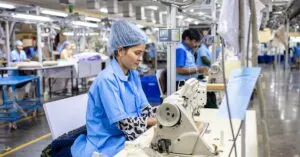Table of Contents
ToggleIn a world where creativity knows no bounds, DIY 3D printing projects are the ultimate playground for innovators and hobbyists alike. Imagine turning your wildest ideas into tangible creations—whether it’s a quirky lamp shaped like a dinosaur or a custom phone stand that doubles as a conversation starter. With just a 3D printer and a sprinkle of imagination, the possibilities are endless.
Overview of DIY 3D Printing Projects
DIY 3D printing projects allow individuals to engage creatively in various applications. Innovators design functional items, while hobbyists explore artistic expressions. Everyday objects like custom phone cases or unique lamp designs emerge from creative minds. Expanding possibilities, people can make prototypes, toys, or even replacement parts for household items.
Common materials used include PLA and ABS filaments, each offering distinct features. PLA, known for its ease of use, suits beginners. ABS provides strength and durability, making it ideal for more robust designs. Both materials significantly expand the scope of projects users can undertake.
Furthermore, online platforms host numerous 3D design repositories. Websites like Thingiverse and MyMiniFactory offer free and paid models for diverse interests. Users can download, modify, or upload their designs, fostering community engagement and collaboration.
Many tools support the 3D printing process. CAD software facilitates intricate designs, while slicer programs prepare models for printing. Additionally, 3D printers vary in capabilities, catering to hobbyists and professionals alike.
Enthusiasts often share their projects on social media platforms. Communities showcase innovative designs and provide tips for troubleshooting common issues. Networking with fellow 3D printing aficionados enhances skills and inspires new ideas.
Ultimately, DIY 3D printing projects exemplify the fusion of art and technology. Engaging in this process empowers individuals to bring their concepts to life, tapping into their creativity and technical skills. With endless possibilities, the world of DIY 3D printing continues to captivate and inspire.
Popular 3D Printing Materials
3D printing relies on various materials, each offering unique properties for different projects. Understanding these materials helps in selecting the right one for specific applications.
Filaments: Types and Uses
Filaments represent the most common medium in 3D printing, with PLA and ABS leading the pack. PLA stands for polylactic acid, known for its ease of use and environmental friendliness. Users favor it for projects requiring intricate designs due to its low shrinkage rate. ABS, short for acrylonitrile butadiene styrene, provides greater strength and durability, making it suitable for functional parts. Other types include PETG, which balances durability and flexibility, and TPU, which offers excellent elasticity. Each type of filament serves distinct purposes, ensuring a versatile printing experience.
Resins: Advantages and Disadvantages
Resins are another popular option, particularly in resin printing for high-detail models. They provide exceptional precision, making them ideal for intricate designs. However, they come with pros and cons. Some advantages include smoother finishes and faster printing times compared to filaments. Certain resins also allow for brilliant color applications in finished products. On the downside, resins can be more expensive and require proper handling due to their potential toxicity. Users must consider ventilation and safety measures when working with resin materials to ensure a safe printing environment.
Essential Tools for 3D Printing
Essential tools play a crucial role in the 3D printing process. These include printers, software, and materials tailored for specific needs.
3D Printers: Budget vs. High-End
Budget 3D printers offer great entry points for beginners. Many affordable models provide decent quality for basic projects. High-end printers, in contrast, deliver superior precision and advanced features. They often support a wider range of materials, catering to professionals and dedicated hobbyists. Notable budget printers include the Creality Ender 3 and Anycubic Mega-S. High-end options like the Prusa i3 MK3S and Ultimaker S3 ensure exceptional results, especially for intricate designs. Selecting between these choices hinges on project requirements, budget constraints, and desired print quality.
Software: Design and Slicing Options
Design software empowers users to create and modify 3D models. Popular options include TinkerCAD and Fusion 360, each catering to different skill levels. Slicing software converts designs into printable files by translating designs into machine code. Slicing tools like Cura and PrusaSlicer optimize settings for better results. Users benefit from community support and extensive documentation in these software ecosystems. Experimenting with various combinations helps determine the most effective setup for individual projects. Prioritizing user needs and compatibility ensures an efficient design-to-print workflow.
Tips for Successful DIY Projects
Successful DIY 3D printing projects depend on careful planning and execution. Attention to detail ensures optimal results and enhances creativity.
Design Considerations
Choosing the right design elements plays a critical role in the success of a project. Start with simple shapes, as they allow for a smoother learning curve. Consider the limitations of the chosen printer and materials before finalizing designs. Tools like TinkerCAD and Fusion 360 can help create and refine models effectively. Incorporating test prints can identify potential issues. Ensuring the model adheres to proper dimensions prevents problems during printing. Always examine the design for overhangs, as this can lead to failed prints. Lastly, learning from completed projects enriches future design choices.
Troubleshooting Common Issues
Addressing common printing issues can significantly improve results. Uneven layers often stem from bed leveling problems, so calibrating the printer frequently is important. Filament jams frequently disrupt the printing process, so checking the extruder can help prevent this. Observing the first layer is essential, as it sets the foundation for success. Adjusting temperature settings can resolve issues with adhesion or warping. If prints fail to stick, employing proper bed adhesion techniques can solve this challenge. Monitoring print progress ensures timely intervention when issues arise. Experimenting with different settings enhances troubleshooting skills over time.
Inspiration for Your Next Project
Exploring DIY 3D printing opens up a world of creativity. Many possibilities exist, especially in two fascinating categories: household items and decorative art.
Household Items
Creating household items with 3D printing enhances daily living. Functional products like custom organizers, unique kitchen tools, and personalized coasters simplify tasks. Users can design storage solutions tailored to specific needs, ensuring efficient use of space. Consider creating a smartphone holder that fits perfectly on a nightstand or a wall-mounted key rack to prevent misplaced keys. Practicality thrives in the realm of 3D printing, allowing for innovative replacements for common objects. With the right design software, even intricate items like custom drawer inserts emerge effortlessly.
Decorative Art
Transforming spaces into aesthetic experiences is achievable with 3D printing. Decorative art pieces such as sculptures, wall art, and bespoke vases showcase individual style. Artists and hobbyists often experiment by crafting intricate designs that reflect personal themes or ideas. Choosing vibrant-colored filaments adds visual impact to each piece. Incorporating light fixtures with 3D printed elements can create stunning focal points in a room. Community platforms frequently share unique designs, inspiring new creations. By embracing diverse artistic expressions, 3D printing elevates home decor to a personal level.
Conclusion
DIY 3D printing projects open up a world of creativity and innovation. By transforming ideas into tangible objects, individuals can explore both functional designs and artistic expressions. The versatility of materials and tools allows for endless experimentation and personalization.
As enthusiasts dive into their projects, they’ll find inspiration in community platforms and the wealth of resources available online. With careful planning and attention to detail, anyone can embark on their 3D printing journey and create unique items that enhance their daily lives. Embracing this technology not only fosters creativity but also empowers individuals to bring their visions to life.




